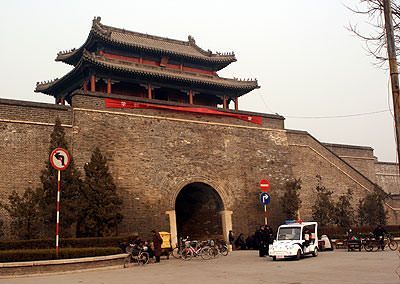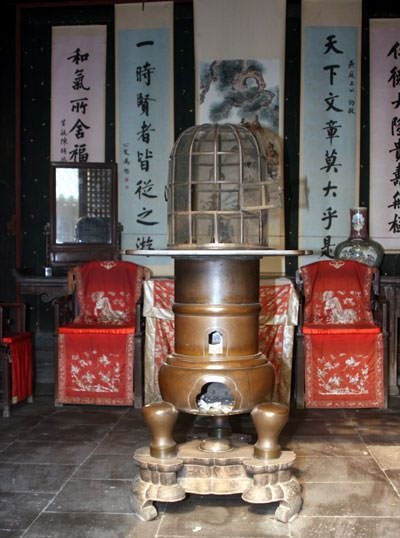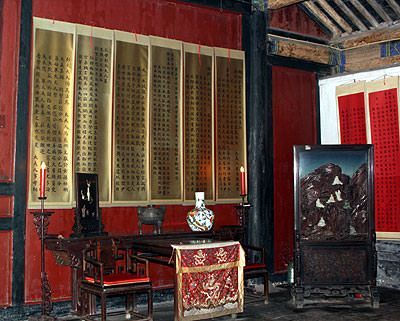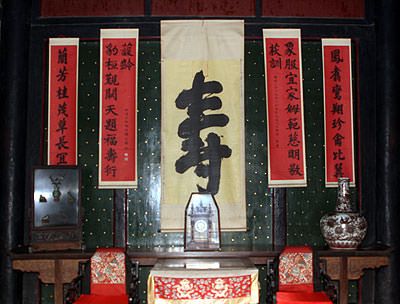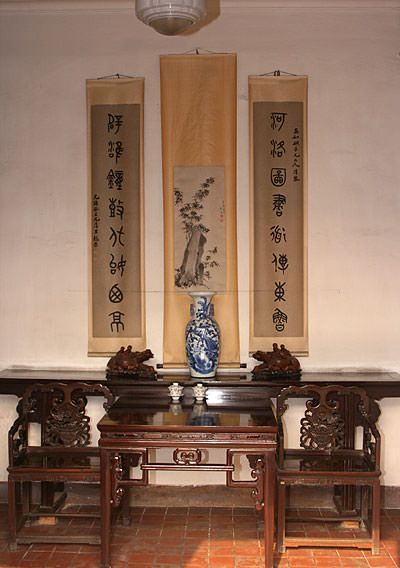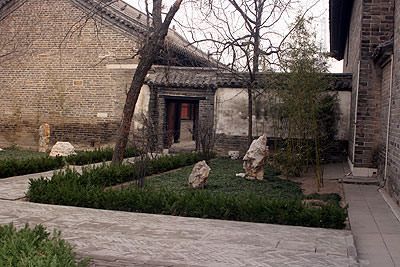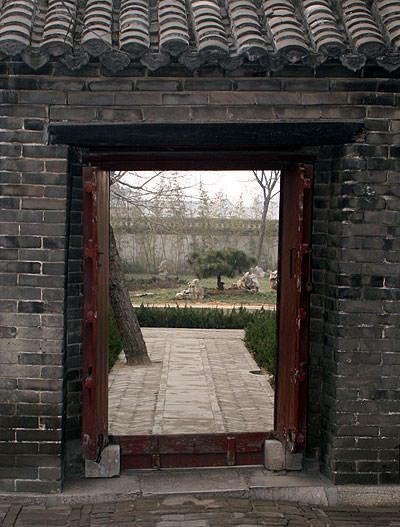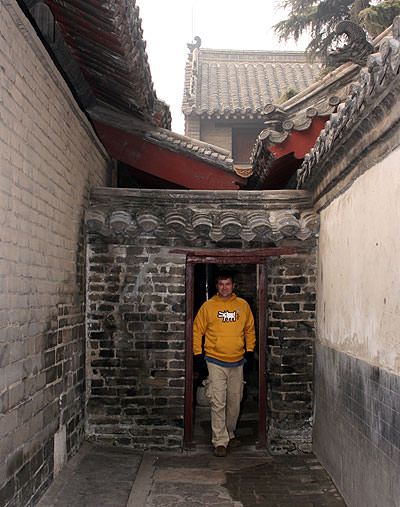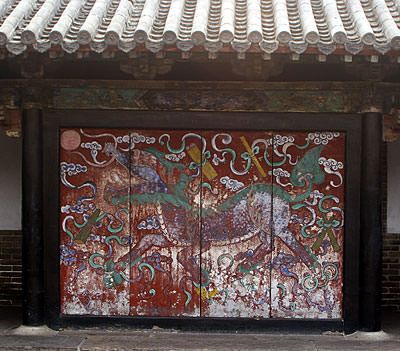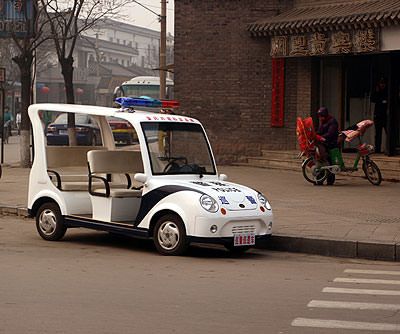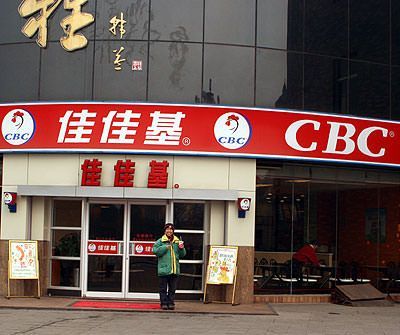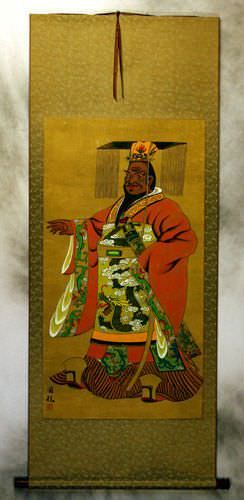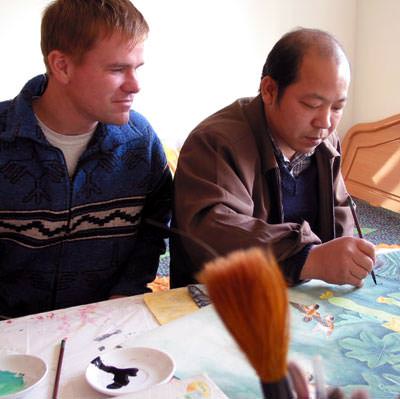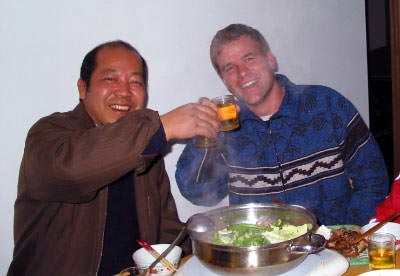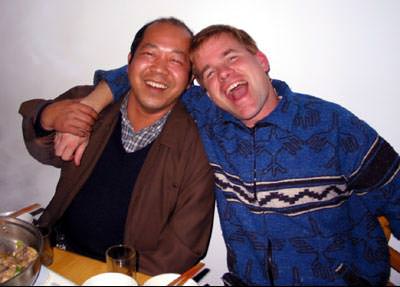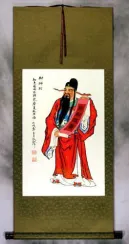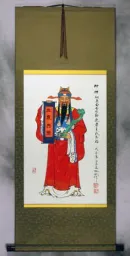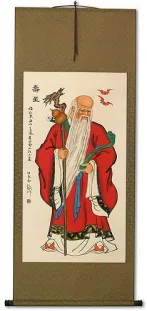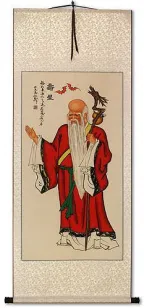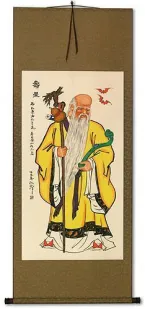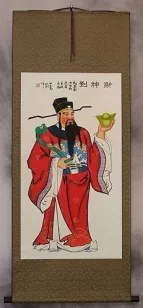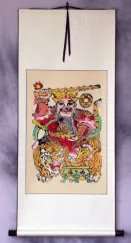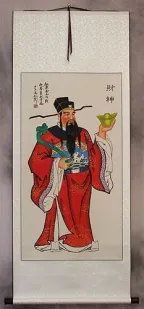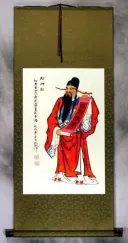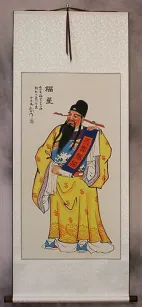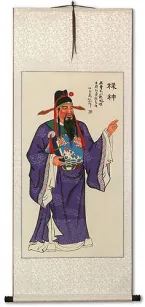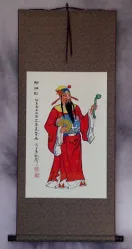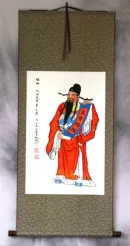

Qin Qiong / Qin Shubao - Door God
This is Qin Qiong (also known as Qin Shubao). He is a famous army general of ancient China. He is known for his pale skin and the dual swords he carries.
About the Art...
This is a very detailed painting that is mounted to a silk wall scroll. A lot of work went into this. It actually takes the artist almost a full day to complete.
This artwork is meant to look like the antique or classic style from hundreds of years ago. The paper has a special distressed and tea-stained texture to give it an old feeling. This is not an antique, but it will look at home with any collection of eastern antique decor.
About this wall scroll
The artwork was painted on xuan paper (often called "rice paper" in the west). The raw artwork was delivered to our Asian art mounting shop in Beijing. There it was built into a completely handmade silk wall scroll by a skilled craftsmen (one of the best in China). The result is a wall scroll that will last many years, and is leaps and bounds above the "tourist trash" wall scrolls that you find in the markets and gift shops around China.
About the amazing artist behind this great artwork:
If you have navigated much of our website, you already know this is a great all-around artist that does wonderful work in many categories. But of course, there is a story...
I was supposed to be on vacation, and I just wanted to see the karst mountain landscapes of the Li River near Guilin. As luck would have it, I stumbled across a very inspiring artist.
In fact, this man is probably the most courageous person that I have ever met. He certainly has my respect and admiration.
While he is a wonderful and talented artist, that is only part of his story
His full name is Ou-Yang Guo-De. He and his sister now live in Guilin. He keeps himself busy painting, while his sister sells his art at a small gallery not far from the center of the city.
When they were very young, their mother died. Their father didn't make much money, and with their mother gone, he had to remarry quickly for financial reasons (very common in Chinese culture under those circumstances and that time in history). Their father found a new wife in a village, and they all moved into the woman's family home.
Part of young Ou-Yang Guo-De's chores included collecting corn cobs that fell from the passing train cars at nearby railroad tracks. The corncobs are burned and used as fuel for cooking, and even heating homes in poorer villages where people cannot afford coal.
One day, when he was about 11 years old, Ou-Yang Guo-De came upon a train that had stopped on the tracks. Under the train he saw a bounty of corncobs. He climbed under the train to get the precious cobs when tragedy stuck. The train began to move, and literally cut him in half...
The details he told me about this event were so vivid that they are a bit too graphic for a happy art listing. He still remembers everything that happened until he lost consciousness, expecting to die.
Though pieces of his story are missing from when he was unconscious, there must have been a miracle involved because somehow he survived. The nearest hospital was far away, and while he has no idea how he got there before bleeding to death, that's were he woke up. But both of his legs and his left arm were gone forever.
In China, the most likely occupation for a disabled person like him would be to become a beggar on the street, but not Ou-Yang Guo-De!
He continued to study and go to school, and went to work at an umbrella and parasol factory. He showed a lot of natural artistic talent, so the factory owner sent young Mr. Ou-Yang to art school for two years. After graduation, he went to work hand painting beautiful scenes on rice paper and silk parasols.
After many years at the factory, working for low wages, he decided to make a change. He took a leap of faith and went out on his own as an artist. It was a little rough at first, but it turned out to be a good decision.
He has done well, and has quite a following. Also, he is a little famous for more than his art. You see, a few years ago, he was given an award by the government of China for being an example of what disabled people should aspire to.
But there is something about him that is different. This guy totally loves life. He is truly happy and good-natured. He laughs and tells jokes and is the life of the party. He is not a social outcast, but rather a social phenomenon. He is surrounded by a lot of friends because I think his friends feed off of his enthusiasm for life - I certainly felt it myself.
I spent several days with the artist, and I may be forever changed. Whenever I think I am in a tough spot, or difficult circumstance, all I have to do is think about Mr. Ou-Yang. If he can overcome what he did, then I can overcome my petty problems.
My Visit to the Home of Confucius:
Unable to get a train ticket to the next city on my art-buying journey, I realized that I'm in Shandong, which is also holds the ancestral home of Confucius. The name of the city that claims the title as the birthplace and home of the Great Sage is Qufu (pronounced like "chew foo").
I arrive at a train station that seems far from the center of Qufu, and with good reason... When train tracks were being laid in China for the first time, the descendants of Confucius (a family that had great influence and respect) demanded that the tracks be laid far from the family home. The reason given was that the vibrations of the trains might bother the resting Confucius in his tomb. Thus, the nearest train station is roughly 10 kilometers outside of the city.
There is also no airport anywhere near Qufu, so your desire to visit Confucius must be enough to overcome the travel obstacles.
Qufu is a little different than other cities in China. My feeling might come from the more quiet nature of Qufu, or the fact that the bicycle taxis in Qufu are a funky front-loading style, rather than the typical rear-passenger seat tricycles in other cities. Also, the police in Qufu drive around in electric cars.
The ancient portion of the city is surrounded by a high wall and gate system - like the one that surrounds Xi'an and used to surround Beijing (Peking) before they tore it down 50 years ago. The Confucian compound takes up most of the space inside the main wall, and that compound is also surrounded by a wall.
The whole place had the status of being a state within a state, with its own small army of guards, and diplomatic representatives that met with officers of the Emperor's court, and even the Emperor himself. The compound can be compared to the Vatican in Rome, with its special status, and history of advising leaders on matters of ethics and philosophy.
